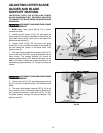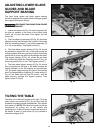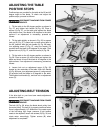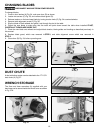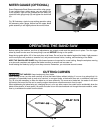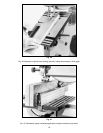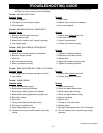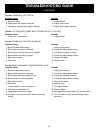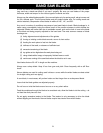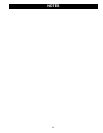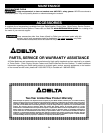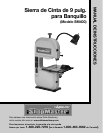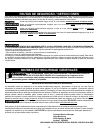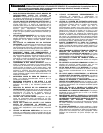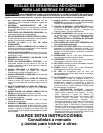
21
BAND SAW BLADES
A band saw blade is a delicate piece of steel that is subjected to tremendous strain. You can obtain
long use from a band saw blade if you use it properly. Be sure you use blades of the proper
thickness, width and temper for the various types of material and cuts.
Always use the widest blade possible. Use narrow blades only for sawing small, abrupt curves and
for fine, delicate work. This will save blades and will produce better cuts. For cutting wood and
similar materials, Shopmaster offers blades in widths of 1/8", 1/4", and 3/8".
Any one of a number of conditions may cause a band saw blade to break. Blade breakage is, in
some cases, unavoidable, being the natural result of the peculiar stresses to which blades are
subjected. Blades will brake often due to avoidable causes, such as the lack of care to the blade
or the blade not being properly adjusted to the band saw. The most common causes of blade
breakage are:
(1) faulty alignments and adjustments of the guides.
(2) forcing or twisting a wide blade around a curve of short radius.
(3) feeding the work piece to fast into the blade.
(4) dullness of the teeth, or absence of sufficient set.
(5) excessive tensioning of the blade.
(6) top guide set too high above the work piece being cut.
(7) using a blade with a lumpy or improperly finished braze or weld.
(8) continuous running of the saw blade when the blade is not in use.
Use blades that are 59-1/2" in length on this machine.
Always use a sharp blade. Keep it free from gum and pitch. Clean frequently with a stiff fiber
brush.
Narrow blades are used for cutting small circles or curves while the wider blades are best suited
for straight cutting such as ripping.
A new blade, in most cases, will perform better and last longer than a re-sharpened blade.
Insure that the blade guides are adjusted properly.
Do not force or twist the blade around a curve or a very short radius.
Feed the workpiece through the blade at a consistent rate, allow the blade to do the cutting – do
not feed the work piece too fast.
Do not apply excessive tension to the blade. The tension is only necessary to drive the blade
without slipping on the wheels. Narrow blades require less tension than wider blades.



